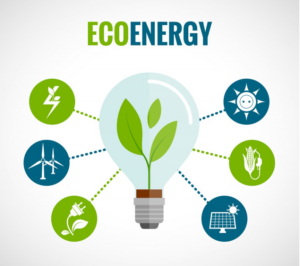
Harnessing Energy Data: A Key to Successful Conservation Projects
In an era marked by a heightened awareness of sustainability and environmental conservation, organizations across the globe are increasingly prioritizing energy efficiency. The cornerstone of effective energy conservation lies in the meticulous gathering and analysis of energy data. This process not only illuminates current energy usage patterns but also shapes the decision-making framework for future sustainability projects. In this blog, we explore why robust energy data gathering is indispensable for organizations aiming to enhance their energy conservation efforts.
Understanding Energy Data Gathering
Energy data gathering involves the systematic collection of information regarding the energy consumption of an organization. They key analyzing energy consumption is having access to extensive histories of consistent granular data. This data can include, but is not limited to, electricity usage, heating and cooling data, water usage, and the performance metrics of installed energy systems. The process employs various tools and technologies, from simple meter readings to advanced sensors and IoT devices that provide real-time data analytics.
The Role of Energy Data in Conservation Efforts
1. Identifying Consumption Patterns: The first step in any conservation project is understanding where, when, and how energy is used. Energy data helps in mapping out consumption patterns, highlighting areas of excessive use, and identifying processes that are inefficient. Without this data, efforts to conserve energy can be misdirected or ineffective.
2. Benchmarking and Target Setting: Energy data allows organizations to benchmark their energy usage against similar entities or industry standards. This comparison is crucial in setting realistic energy reduction targets and developing strategies tailored to specific needs and capacities.
3. Facilitating Proactive Maintenance: Regular monitoring of energy consumption data helps in recognizing anomalies that may indicate equipment failure or inefficiencies. For instance, a sudden spike in energy usage could signal a malfunctioning HVAC system. Proactive maintenance based on data can prevent larger, more costly breakdowns and conserve energy over time.
4. Enhancing Energy Efficiency Projects: Data-driven insights enable organizations to choose appropriate energy-saving technologies and practices. For example, data may show that replacing traditional lighting with LED lights or optimizing heating and cooling systems could yield significant energy savings. With concrete data, organizations can prioritize investments that promise the highest return in terms of energy conservation.
5. Compliance and Reporting: Many regions require organizations to report their energy consumption and adhere to environmental standards. Accurate energy data is crucial for compliance with these regulations and for participating in voluntary sustainability certifications, which can enhance an organization’s public image and marketability.
6. Monitoring and Verification: Post-implementation monitoring is essential to verify the success of energy conservation measures. Energy data provides a before-and-after snapshot to evaluate the effectiveness of implemented projects, ensuring that the anticipated energy savings are realized.
Challenges in Energy Data Gathering
Despite its benefits, collecting high-quality energy data can be challenging. Organizations often face technical barriers, such as the integration of data from diverse sources or outdated infrastructure that does not support modern data collection technologies. There is also the need for ongoing investment in data management systems and training for personnel to interpret and act on the data effectively.
Case Studies of Successful Energy Data Utilization
Numerous organizations have leveraged energy data to drive significant conservation efforts. For instance, a large manufacturing facility might use energy consumption data to optimize its production processes, reducing both energy use and operational costs. Similarly, a university campus could implement smart sensors across its buildings to monitor and adjust energy use dynamically, achieving substantial energy savings and reducing its carbon footprint.
Conclusion
The role of energy data in conservation projects cannot be overstated. It forms the backbone of strategic planning and operational adjustments in the quest for sustainability. As technologies advance, the potential for sophisticated data gathering and analysis is expanding, offering organizations unprecedented opportunities to enhance their energy efficiency. For organizations looking to embark on or enhance their energy conservation efforts, investing in robust energy data gathering capabilities is a critical first step. This not only aids in immediate energy management but also paves the way for a sustainable and energy-efficient future.
